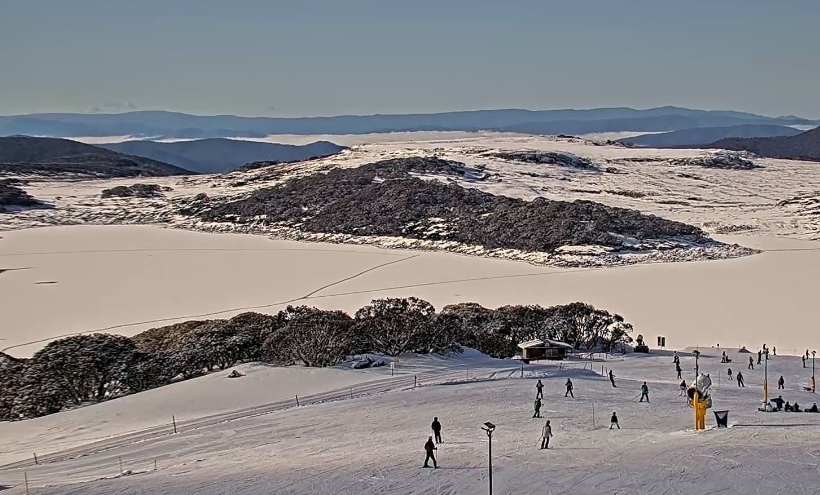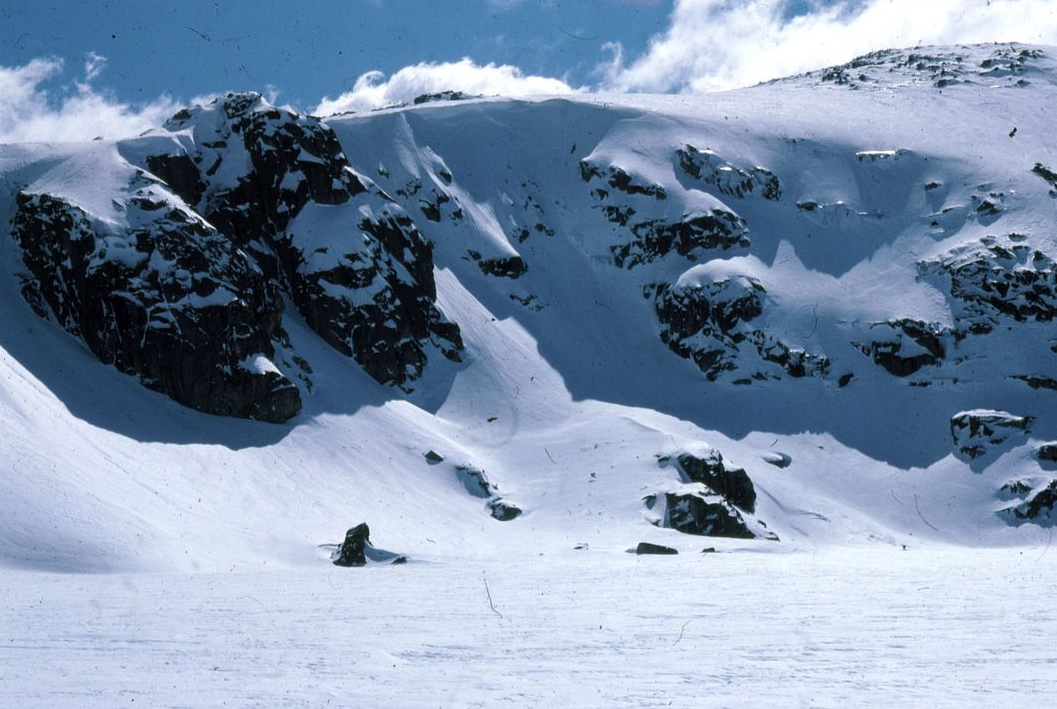How many Australian lakes freeze in winter?
An interesting sight greeted visitors to Victoria’s Falls Creek ski resort this Tuesday morning: an almost totally frozen lake below the ski slopes.
Falls Creek's Rocky Valley Dam sits at an elevation of 1600 metres and provides water for the Kiewa Hydro-Electric Scheme. It's Australia's second-highest man-made reservoir, with the highest being the smaller nearby Pretty Valley Pondage.

Image: Not the worst view from the ski slopes. Source: Fallscreek.com.au.
Even in a heavy snow year, Rocky Valley dam often only freezes over entirely for short periods, or even not at all. For most of the winter, ice only forms at the edges. Victorian outdoors enthusiast Stefaan Steyn says the last time he skied across part of the dam was in 2018.
For freshwater lakes to freeze, you don’t just need air temperatures of zero (or significantly colder) at lake level; you also need the surface water temperature to reach zero.
To enable surface cooling, you ideally need a string of very cold nights with windless conditions that don’t disturb the water. If you’ve followed the weather in southeast Australia in the last week, you’d know that’s exactly what we’ve had.
So how many Aussie lakes freeze entirely each winter?
Apart from the two just mentioned, Victoria has few lakes that freeze in winter as most large natural or man-made water bodies are at lower elevations.
Tasmania and New South Wales have more icy lakes, and indeed Tasmania saw some of its largest Central Highlands lakes freeze with ice as thick as two centimetres in the spell of extremely cold nights in early July.
New South Wales is the one state where you can rely on at least four lakes to freeze entirely each year, with heavy snow settling on top of the ice. Those are the glacial lakes in Kosciuszko National Park – Blue Lake, Club Lake, Lake Albina, and Lake Cootapatamba.
All four lakes fill hollows created by the action of glaciers in the Ice Age more than ten thousand years ago, and the latter is Australia's highest lake at an elevation of 2048 metres, situated beneath Mt Kosciuszko's southwest ridge.

Image: Blue Lake looking a very white lake. Source: Stefan Karpiniec, Wikimedia Commons.
The water in Kosciuszko's four glacial lakes remains extremely chilly even into summer, staying in single digits most months and topping out at around 10-12°C in January and February.
By contrast, Rocky Valley Dam is a little warmer, but not much. Often you see AFL teams and other sporting groups training in the area in summer and going for a dip. Even on hot days, swimmers are pretty quick to grab a towel afterwards.
Oh, and if you've ever wanted to watch the famous Jackie Chan scene where he ends up dodging machine gun fire from a helicopter while swimming in an icy Rocky Valley Dam (of course you have!) it's here.